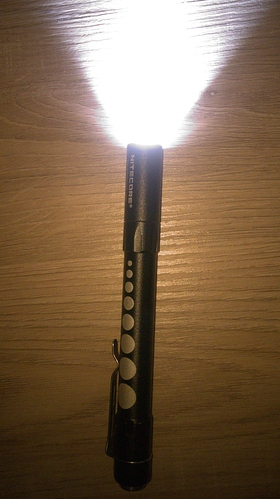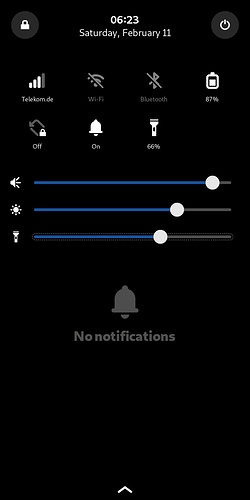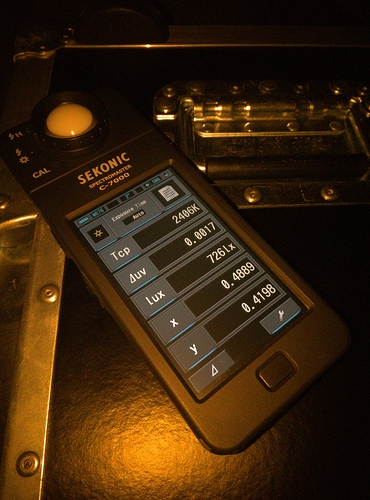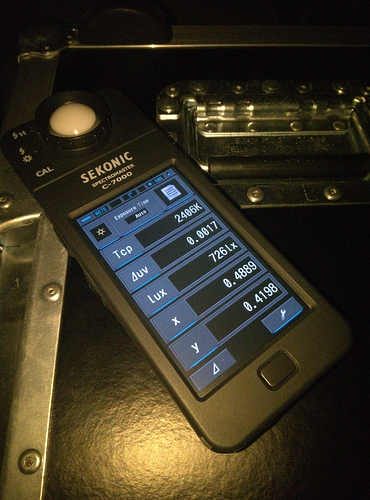I’d rather measure the output before posting any numbers, I measured the output from two separate Librem 5s, both were in the region of 2400K, below is the summary results from one of the captures…
Agreed, the CRI results don’t make great reading, as a simple torch LED it isn’t really much of an issue, as a camera flash source however, it’s not going to be winning any prizes. In today’s world, I wouldn’t hang my hat on CRI, there is a number of problems with CRI in general and although not completely meaningless, it doesn’t provide a complete picture, it has been largely abandoned in favour of TLCI (the Librem 5 torch LED measures 37 for TLCI). For white light sources SSI against the relevant CIE Standard Illuminant is also becoming a common reference metric.
I find it strange to see so much talk of colour temperature with no mention of [white] balance. For a quick and dirty demonstration, below is an image of the meter used in the measurements, the image is taken with a Librem 5, zero ambient light, so it’s being lit purely by the torch LED at 100% intensity, the [white] balance is set at the default “d50”…
No great surprise that the image has a heavy amber tint, the effects of lighting the subject with 2400K while camera is set to colour balance on 5000K.
The next image has exactly the same parameters with the exception of the [white] balance being set to “A”…
The colour balance has certainly shifted in the right direction but it does have a clearly visible yellow tint, this is to be expected as [white] balance “A” is a reference to CIE A Standard Illuminant which is referenced to a tungsten source with a colour temperature of approximately 2850K (IIRC). Unfortunately, there is no option/ability to set the [white] balance of the camera to 2400K to match the torch LED.
The next image has the camera with the exact same parameters as the last image ([white] balance set to “A”), the only difference is that the torch LED has been turned of and the subject is being lit by a pocket light (
DMG Lumiere DASH) set to approximately 2850K.
Doubtful, all of the major manufacturers have put out technical papers detailing the difficulties of both manufacturing LEDs to tight tolerances and accurately measuring the characteristics, in short, no manufacturer would commit to exacts.


 ) light color at exactly 5000K/CRI95 (I’m quite sure):
) light color at exactly 5000K/CRI95 (I’m quite sure):







